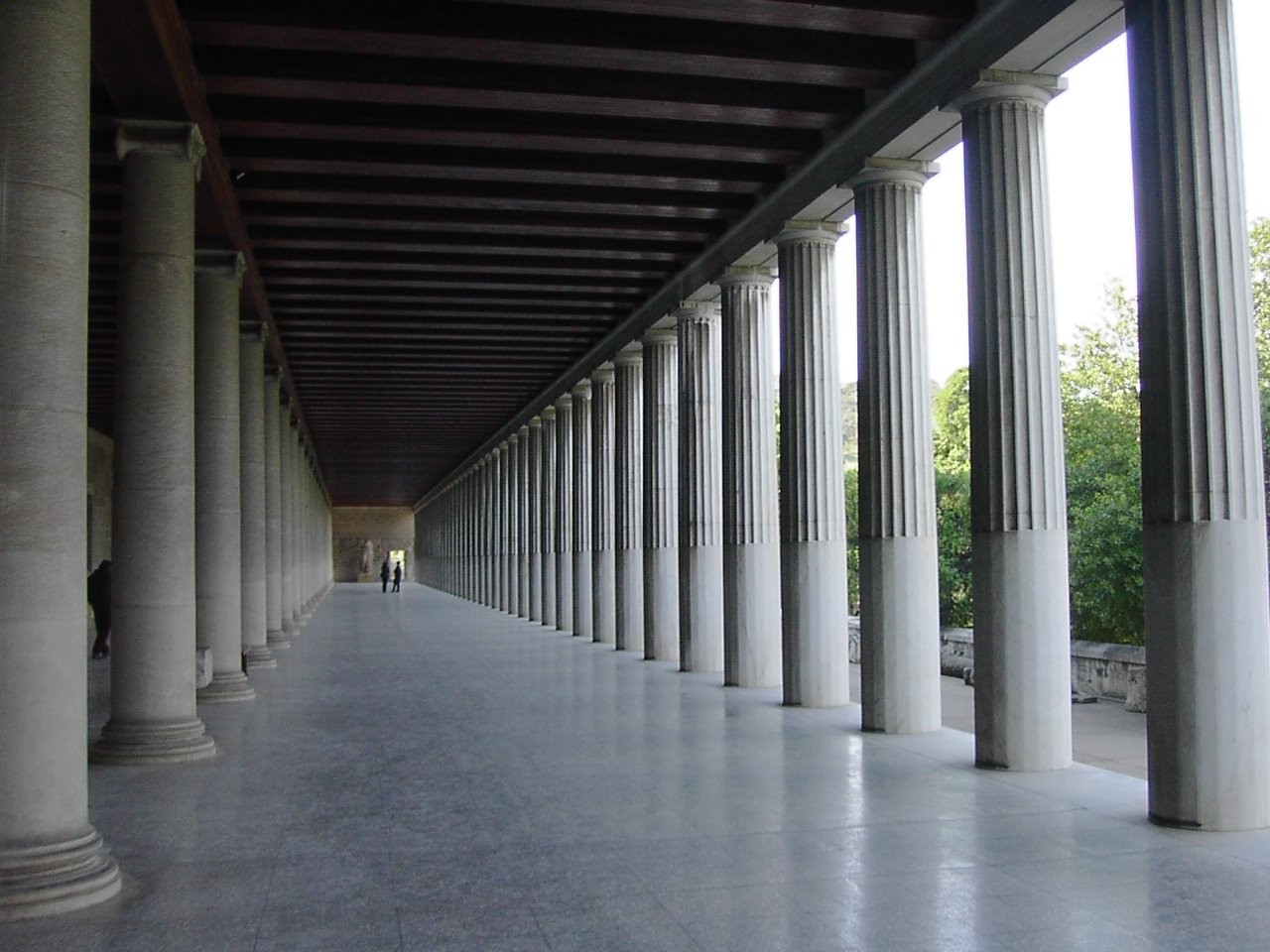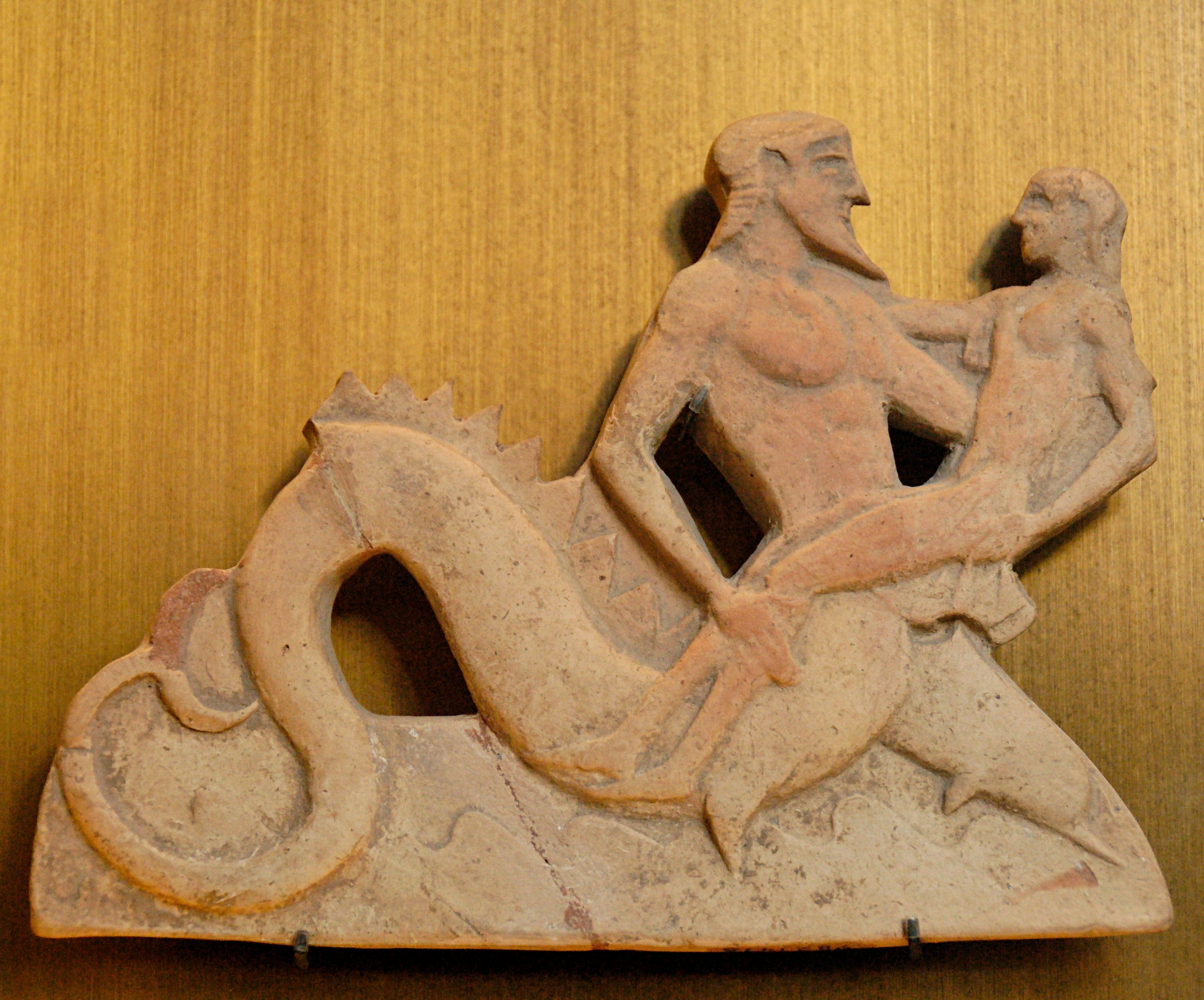|
Catacombs Of Milos
The Catacombs of Milos are an ancient underground Christian cemetery located on the island of Milos in the Cyclades, Greece, dating to the 1st-5th century AD. The catacombs are found near the modern settlement of Trypiti, next to the site of the agora of the ancient city of Melos and 200 m to the east of the ancient theatre. The name Trypiti (Τρυπητή, "made with ''holes'' [τρύπες]")The name is a feminine ‘stranded adjective’. derives from the fact that the surrounding area is full of caves cut into the porous volcanic rock, which are still used by the inhabitants as storerooms and stables. In ancient times, these caves were used as family burial chambers. The galleries are of differing widths, ranging from 1 to 5 metres in width and from 1.6 to 2.5 metres in height. In addition to the tombs cut into the walls, there are also many graves cut into the ground and covered with unworked stones of irregular sizes. It is underground. References ... [...More Info...] [...Related Items...] OR: [Wikipedia] [Google] [Baidu] |
Catacombs Milos
Catacombs are man-made underground passages primarily used for religious purposes, particularly for burial. Any chamber used as a burial place is considered a catacomb, although the word is most commonly associated with the Roman Empire. Etymology and history The first place to be referred to as ''catacombs'' was the system of underground tombs between the 2nd and 3rd milestones of the Appian Way in Rome, where the bodies of the apostles Peter and Paul, among others, were said to have been buried. The name of that place in Late Latin was ''catacumbas'' (feminine nominative plural; the singular is ''catacumba'') — a word of obscure origin, possibly deriving from a proper name or a derivation of the Greek phrase ''cata cumbas'', "below the quarries". The word referred originally only to the Roman catacombs, but was extended by the 19th century to refer to any subterranean receptacle of the dead, as in the 18th-century Paris catacombs. The ancient Christians carved the first ca ... [...More Info...] [...Related Items...] OR: [Wikipedia] [Google] [Baidu] |
Milos
Milos or Melos (; , ; ) is a volcanic Greek island in the Aegean Sea, just north of the Sea of Crete. It is the southwestern-most island of the Cyclades group. The ''Venus de Milo'' (now in the Louvre), the ''Poseidon of Melos'' (now in the NAMA) and the '' Asclepius of Milos'' (now in the British Museum) were all found on the island, as was an archaic Apollo now in Athens. Milos is a popular tourist destination during the summer. The municipality of Milos also includes the uninhabited offshore islands of Antimilos and Akradies. The combined land area is and at the 2021 census the population was 5,193 inhabitants. History Obsidian (a glass-like volcanic rock) from Milos was a commodity as early as 15,000 years ago. Natural glass from Milos was transported over long distances and used for razor-sharp "stone tools" well before farming began and later: "There is no early farming village in the Near East that doesn't get obsidian". The mining of obsidian did not lead to the ... [...More Info...] [...Related Items...] OR: [Wikipedia] [Google] [Baidu] |
Cyclades
The CYCLADES computer network () was a French research network created in the early 1970s. It was one of the pioneering networks experimenting with the concept of packet switching and, unlike the ARPANET, was explicitly designed to facilitate internetworking. The CYCLADES network was the first to make the hosts responsible for the reliable delivery of data, rather than this being a centralized service of the network itself. Datagrams were exchanged on the network using transport protocols that do not guarantee reliable delivery, but only attempt best-effort. To empower the network leaves the hosts to perform error-correction, the network ensured end-to-end protocol transparency, a concept later to be known as the end-to-end principle. This simplified network design, reduced network latency, and reduced the opportunities for single point failures. The experience with these concepts led to the design of key features of the Internet Protocol in the ARPANET project. The network ... [...More Info...] [...Related Items...] OR: [Wikipedia] [Google] [Baidu] |
Greece
Greece, officially the Hellenic Republic, is a country in Southeast Europe. Located on the southern tip of the Balkan peninsula, it shares land borders with Albania to the northwest, North Macedonia and Bulgaria to the north, and Turkey to the east. The Aegean Sea lies to the east of the Geography of Greece, mainland, the Ionian Sea to the west, and the Sea of Crete and the Mediterranean Sea to the south. Greece has the longest coastline on the Mediterranean Basin, spanning List of islands of Greece, thousands of islands and nine Geographic regions of Greece, traditional geographic regions. It has a population of over 10 million. Athens is the nation's capital and List of cities and towns in Greece, largest city, followed by Thessaloniki and Patras. Greece is considered the cradle of Western culture, Western civilisation and the birthplace of Athenian democracy, democracy, Western philosophy, Western literature, historiography, political science, major History of science in cl ... [...More Info...] [...Related Items...] OR: [Wikipedia] [Google] [Baidu] |
Trypiti
Trypiti () is a small town in the island of Milos, Greece Greece, officially the Hellenic Republic, is a country in Southeast Europe. Located on the southern tip of the Balkan peninsula, it shares land borders with Albania to the northwest, North Macedonia and Bulgaria to the north, and Turkey to th .... Population 766 (2021). It is famous for being located next to the Milos Catacombs and the Roman theatre. References Populated places in Milos (regional unit) Milos {{SAegean-geo-stub ... [...More Info...] [...Related Items...] OR: [Wikipedia] [Google] [Baidu] |
Agora
The agora (; , romanized: ', meaning "market" in Modern Greek) was a central public space in ancient Ancient Greece, Greek polis, city-states. The literal meaning of the word "agora" is "gathering place" or "assembly". The agora was the center of the athletic, artistic, business, social, spiritual, and political life in the city. The Ancient Agora of Athens is the best-known example. Origins Early in Greek history (10th–4th centuries BC), free-born citizens would gather in the agora for military duty or to hear statements of the ruling king or council. Later, the agora also served as a marketplace, where merchants kept stalls or shops to sell their goods amid Arcade (architecture), arcades. This attracted artisans who built workshops nearby. From these twin functions of the agora as a political and a commercial spot came the two Greek verbs , ''agorázō'', "I shop", and , ''agoreúō'', "I speak in public". Ancient Agora of Athens The Ancient Agora of Athens was situat ... [...More Info...] [...Related Items...] OR: [Wikipedia] [Google] [Baidu] |
Ancient Milos
Milos or Melos (; , ; ) is a volcanic Greek island in the Aegean Sea, just north of the Sea of Crete. It is the southwestern-most island of the Cyclades group. The ''Venus de Milo'' (now in the Louvre), the ''Poseidon of Melos'' (now in the NAMA) and the ''Asclepius of Milos'' (now in the British Museum) were all found on the island, as was an archaic Apollo now in Athens. Milos is a popular tourist destination during the summer. The municipality of Milos also includes the uninhabited offshore islands of Antimilos and Akradies. The combined land area is and at the 2021 census the population was 5,193 inhabitants. History Obsidian (a glass-like volcanic rock) from Milos was a commodity as early as 15,000 years ago. Natural glass from Milos was transported over long distances and used for razor-sharp "stone tools" well before farming began and later: "There is no early farming village in the Near East that doesn't get obsidian". The mining of obsidian did not lead to the dev ... [...More Info...] [...Related Items...] OR: [Wikipedia] [Google] [Baidu] |
Catacombs
Catacombs are man-made underground passages primarily used for religious purposes, particularly for burial. Any chamber used as a burial place is considered a catacomb, although the word is most commonly associated with the Roman Empire. Etymology and history The first place to be referred to as ''catacombs'' was the system of underground tombs between the 2nd and 3rd milestones of the Appian Way in Rome, where the bodies of the apostles Peter and Paul, among others, were said to have been buried. The name of that place in Late Latin was ''catacumbas'' (feminine nominative plural; the singular is ''catacumba'') — a word of obscure origin, possibly deriving from a proper name or a derivation of the Greek phrase ''cata cumbas'', "below the quarries". The word referred originally only to the Roman catacombs, but was extended by the 19th century to refer to any subterranean receptacle of the dead, as in the 18th-century Paris catacombs. The ancient Christians carved the firs ... [...More Info...] [...Related Items...] OR: [Wikipedia] [Google] [Baidu] |
Tourist Attractions In The South Aegean
Tourism is travel for pleasure, and the Commerce, commercial activity of providing and supporting such travel. World Tourism Organization, UN Tourism defines tourism more generally, in terms which go "beyond the common perception of tourism as being limited to holiday activity only", as people "travelling to and staying in places outside their usual environment for not more than one consecutive year for leisure and not less than 24 hours, business and other purposes". Tourism can be Domestic tourism, domestic (within the traveller's own country) or International tourism, international. International tourism has both incoming and outgoing implications on a country's balance of payments. Between the second half of 2008 and the end of 2009, tourism numbers declined due to a severe Economy, economic slowdown (see Great Recession) and the outbreak of the 2009 2009 flu pandemic, H1N1 influenza virus. These numbers, however, recovered until the COVID-19 pandemic put an abrupt end to th ... [...More Info...] [...Related Items...] OR: [Wikipedia] [Google] [Baidu] |



